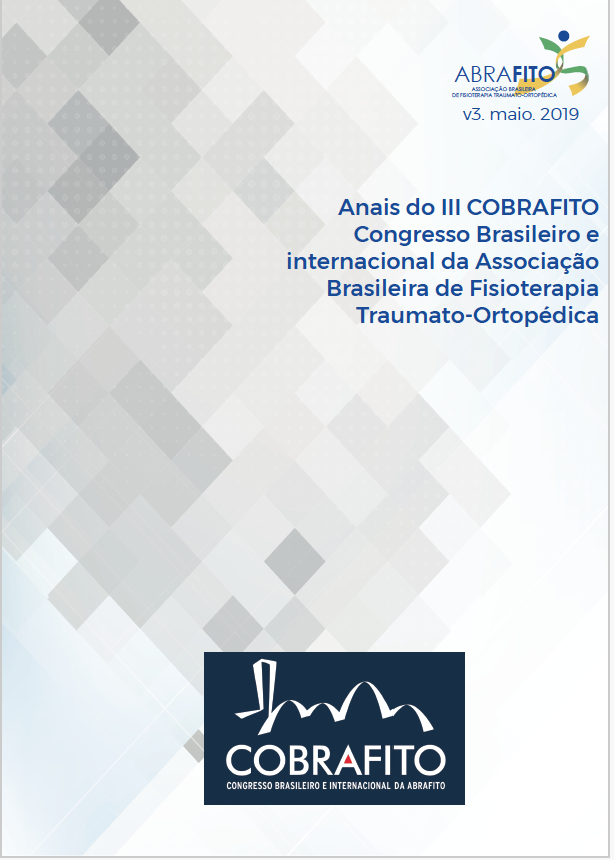PHOTOBIOMODULATION DECREASES FATIGUE OF THE WRIST EXTENSORS: ELECTROMYOGRAPHIC AND DYNAMOMETRIC ANALYSIS
Resumo
Objective: This study analyzed the effects of photobiomodulation, on wrist extensor muscles when applied before a fatigue protocol. Methods: Twenty-eight men participated in a crossover, blinded, and controlled trial. Subjects performed grip dynamometry associated with superficial electromyography (EMG) of the extensor carpi radialis (ECR), extensor carpi ulnaris (ECU), and flexor digitorum superficialis (FDS), which was used to evaluate muscle recruitment pattern by median frequency (MF). The initial assessment was performed with a one-repetition maximum (1-RM) test. Twenty-four hours later the allocation was performed in two moments, and randomization was initially performed with 28 volunteers, divided between the two groups: control group (CG), and the LLLT (30 mW, 0.06 cm², 20 J/cm², 1.2 J per point, and total energy of 10.8 J). Results: MF demonstrated ECU fatigue in the CG as well as when compared after the fatigue protocol in the LG. Exhaustion time was greater in the LG and the fatigue protocol was effective at decreasing grip strength, with significant difference in the CG (p < 0.05). Conclusion: After the fatigue protocol, LLLT was effective in maintaining grip strength to increase exhaustion time and does not promote alterations in MF behavior at wrist extensor muscles.Downloads
Publicado
2019-05-25
Edição
Seção
Resumo
Licença
Autores do manuscrito deverão preencher e assinar a Declaração de Responsabilidades e Transferência de Direitos Autorais, que deverá ser anexada, pelo autor responsável pela submissão, no passo 4 do processo de submissão no sistema da revista (Clicar na opção “Browse”, selecionar o arquivo que deve ser inserido no formato pdf, clicar no botão “Transferir”, no campo “Título” digitar: Declaração de responsabilidades, depois clicar no botão “Salvar e Continuar” e prosseguir com o processo de submissão).Como Citar
PHOTOBIOMODULATION DECREASES FATIGUE OF THE WRIST EXTENSORS: ELECTROMYOGRAPHIC AND DYNAMOMETRIC ANALYSIS. (2019). Anais Do Congresso Brasileiro Da Associação Brasileira De Fisioterapia Traumato-Ortopédica - ABRAFITO, 3(1). https://seer.uftm.edu.br/anaisuftm/index.php/abrafito/article/view/2309

